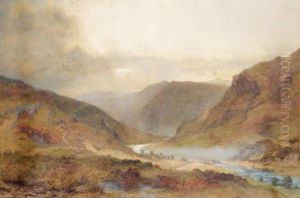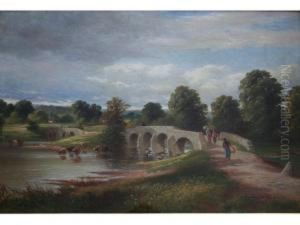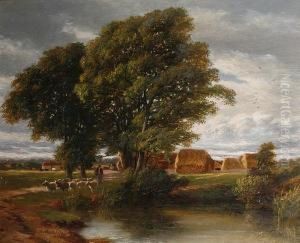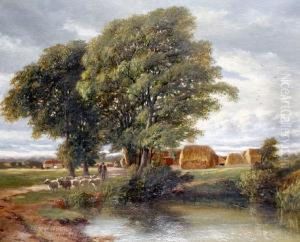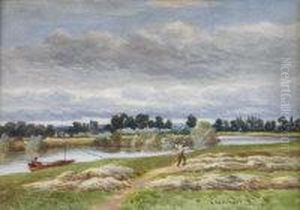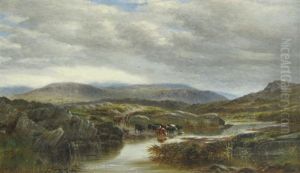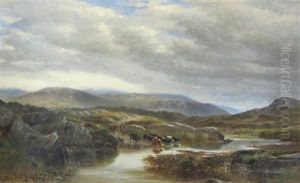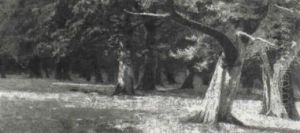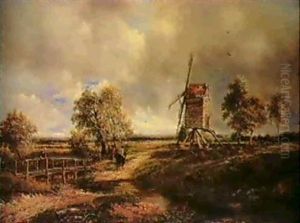Charles Walter Radclyffe Paintings
Charles Walter Radclyffe was an English artist, born in 1817 in the city of Chester. He was part of a family deeply involved in the arts, with his father, William Radclyffe, being an engraver and his brother, Edward Radclyffe, also following in their father's footsteps. Charles grew up in an environment that nurtured his artistic talents, and he was exposed to the world of art and engraving from an early age.
Radclyffe developed his skills primarily as a landscape painter and watercolorist, and he was known for his meticulous attention to detail. His work often depicted the landscapes and cityscapes of England, capturing the essence and beauty of the British countryside and urban scenes with a particular focus on historical buildings and monuments. He had a penchant for architectural accuracy, which made his work valuable not only as works of art but also as historical records.
Throughout his career, Charles Walter Radclyffe exhibited at various institutions, including the Royal Academy. His engravings and paintings were well-received, and he gained a reputation for his technical skill and artistic eye. In addition to his art, Radclyffe was involved in the publication of several illustrated books, contributing his engravings to enhance the texts with visual representations.
Radclyffe's work is a testament to the Victorian era's interest in the romantic portrayal of landscapes and historical edifices. His dedication to his craft and the quality of his output have ensured that his work remains of interest to art historians, collectors, and enthusiasts of Victorian art.
Charles Walter Radclyffe passed away in 1903, leaving behind a legacy of detailed and picturesque views of nineteenth-century England. His work continues to be appreciated for its historical value and its contribution to the visual arts during a time of great change and industrialization in Britain.
